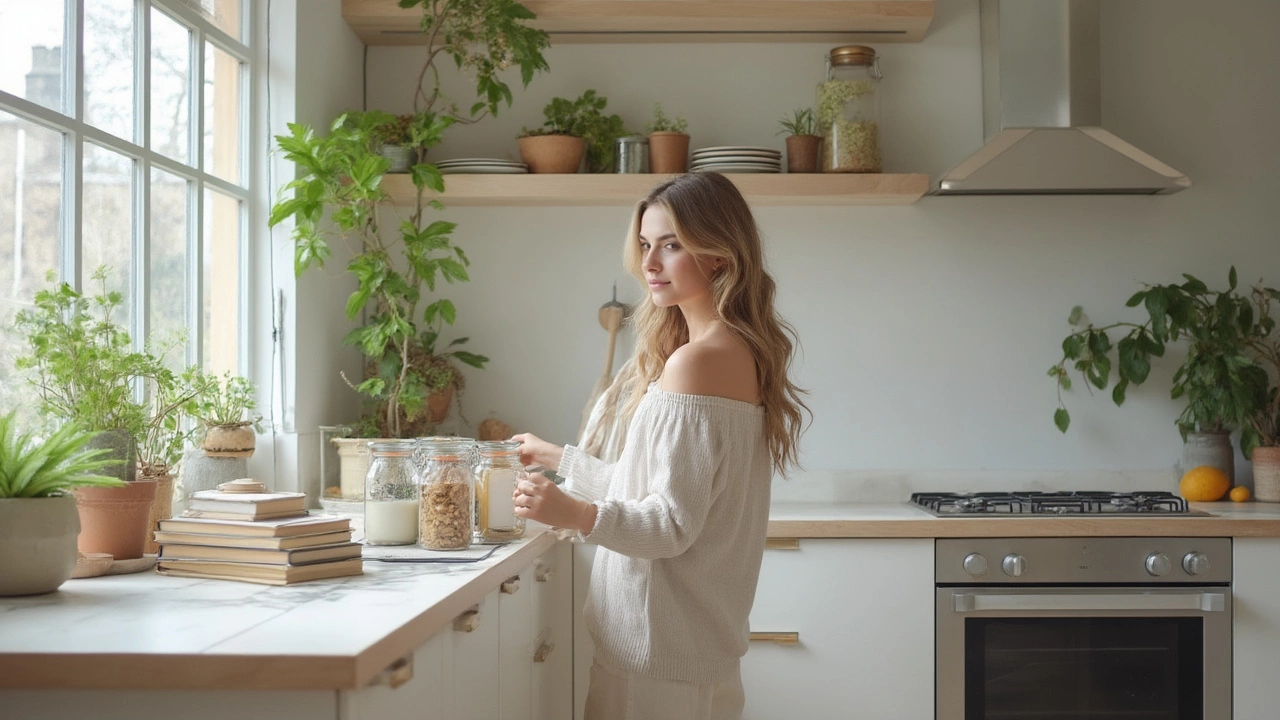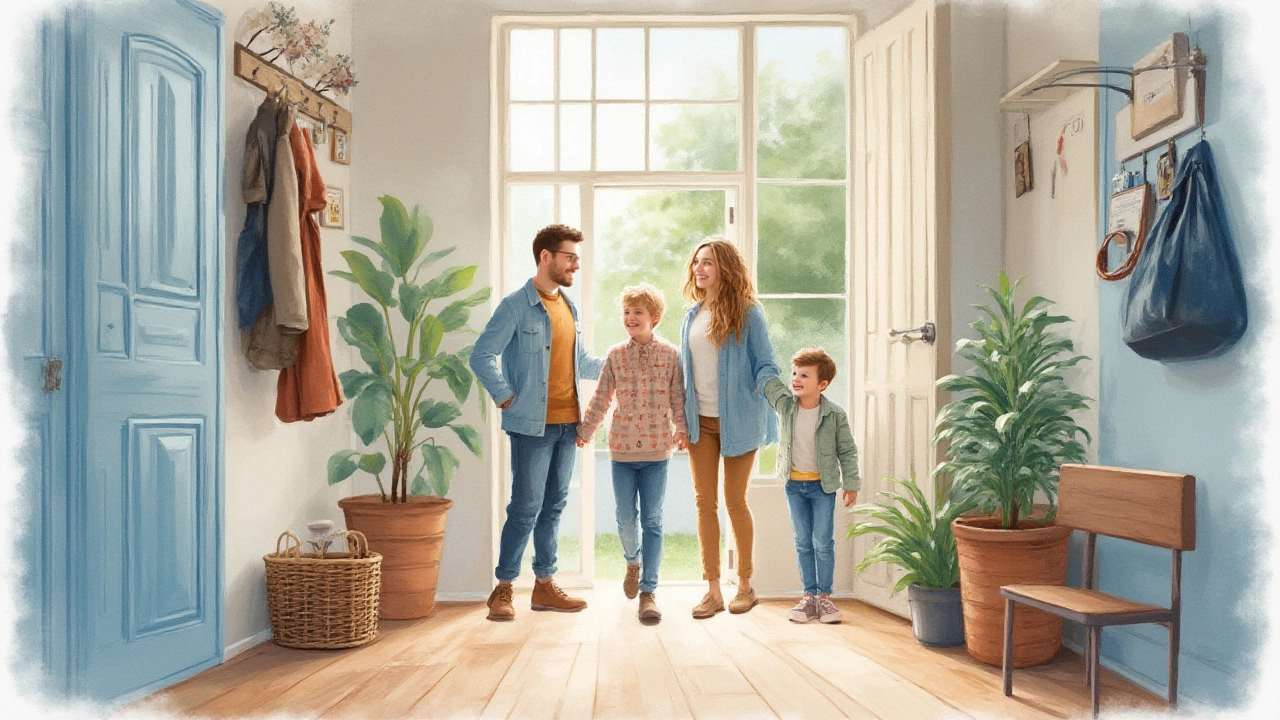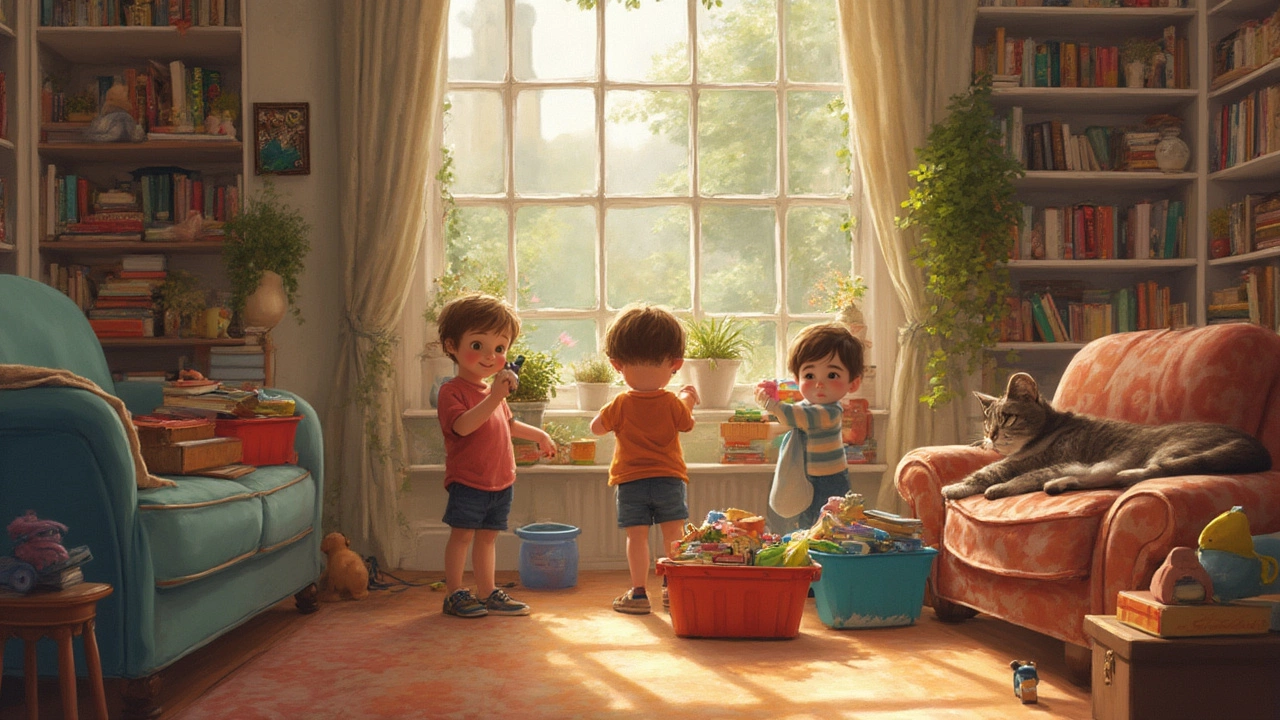A pile on the kitchen counter, bags tossed by the door, and a closet you’d rather move than clean out — sound familiar? You’re not alone. Studies from the National Association of Professional Organizers say we spend about one year of our lives looking for lost items around the house. And here’s a wild stat: Americans have an average of 300,000 items in their homes. How are we supposed to keep up with all of that? Here’s the thing: if you know where to start and in what order, the chaos shrinks. Three basic steps are all you need to organize your home, whether it’s a studio apartment or a suburban house crammed with kids’ stuff and pet toys. We’re going to break it down without boring lectures, so by the end, you’ll have a game plan that anyone (yes, even you) can actually stick to.
Declutter: Cut the Chaos First
Imagine you’re trying to mop your floors, but there are muddy footprints everywhere. You’d clean the floors first, right? Same with organizing — before you start shuffling things from one shelf to another, you need to weed out the stuff you don’t use or love. Decluttering is different from cleaning. It’s about making decisions, and yes, it can be tough. According to a 2023 IKEA Life at Home Report, nearly half of people feel “overwhelmed” by the amount of stuff in their homes. That’s a pretty good reason to clear things out.
Start room by room. Don’t try to attack the whole house at once — you’ll end up overwhelmed, frustrated, and halfway through you’ll want to order pizza and watch TV instead. Focus on easy wins first: bathroom toiletries, socks with no partners, old magazines stacked in the living room. Small victories give you momentum to tackle the tough spots like your sentimental boxes and that junk drawer (don’t worry, everyone has one).
Here’s a tip: set a timer for 20 minutes. That’s long enough to see progress, but short enough that you don’t dread it. Grab three bags or bins: one for keep, one for toss, one for donate or sell. Pick up each item and decide what it is. Be honest — when did you last use it? Is it broken? Is it just taking up space? If your answer starts with “Well, maybe someday…” you know it’s headed for the donate bag.
Let yourself get a little ruthless. Research from Princeton University actually found that physical clutter competes for your attention, making it harder to focus. So, every sweater you never wear or gadget you forgot you owned isn’t just taking up space. It’s also stressing out your brain. Clear counters and open spaces signal calm. And don’t guilt-trip yourself over “wasting” things by getting rid of them — guilt is not an organizing strategy. If you haven’t used it in the last year, let it go. Donate to local charities or pass along to friends.
Decluttering isn’t always about throwing things away. Sometimes it’s about finding a better spot for items. Move the dog leash by the front door. Store towels closer to the bathroom. Move all holiday decorations to labeled bins in one spot in the garage or closet; you’ll thank yourself next December. Even school papers can stay under control with a simple filing box.
Keep an ‘outbox’ by your entryway for stuff you’re ready to donate or return to friends. When the box is full, put it in the car. Make it part of your weekly routine. Most importantly, train yourself to pause before bringing anything new in. There’s a handy rule: for every one item in, two go out. Try it, and watch how much easier it gets to up keep the peace in your home.
Sort: Give Everything a Home
Now you’ve got less stuff, it’s time to get intentional about where it all lives. If you’ve ever torn your house apart searching for your keys, you’ll get why this step is crucial. A UCLA study found that women’s stress levels spiked when they described their homes as ‘cluttered’ or ‘disorganized’ — so the goal here is to create calm by giving every single item its own address.
First, group like with like. Gather all cleaning supplies in one spot. Stack your books together. Sort through shoes, charging cables, reusable water bottles, and batteries. When you see everything side by side, you quickly realize how much you actually have — and it becomes obvious when you own six spatulas or three copies of the same novel.
Keep things close to where you use them. It sounds simple, but it changes everything. Store coffee mugs near the coffee maker. Place pet food by the bowls, not buried in a pantry on the other side of the house. Make a charging station for devices and dock everything in one spot overnight.
Use bins, trays, and baskets. Labels are your best friend — especially for kids, roommates, or brain-foggy mornings. You can find decent label makers for under $30, but masking tape and a Sharpie work just as well. Transparent bins are gold for pantries and bathrooms. No need to guess what’s inside. If you’re into organizing ‘hacks,’ try a shoe organizer over a closet door for scarves, snacks, or hair products.
Don’t forget ‘vertical’ storage. Mount shelves, hooks, or pegboards to free up floor space. Use the back of cabinet doors for spices or cleaning supplies. Rolling carts can turn empty corners into handy storage spots, especially in small apartments.
Your system should make sense for the way you live, not just look pretty for Instagram. Store everyday stuff front and center; stash seasonal or less-used things higher up or in harder-to-reach spots. Hard rule: if you can’t grab it with one hand, it’s too buried. Make the after-school backpack drop zone a real thing — a sturdy hook, a basket for shoes, and they’ll actually use it instead of dumping everything in the living room.
Kitchens, by the way, are often the trickiest. Use drawer dividers for utensils. Store spices alphabetically or by cuisine. Decant dry goods like flour or rice into clear containers. Here’s a little-known trick: stick a magnetic knife strip on your backsplash for knives, scissors, or even measuring spoons. Makes prep way faster – and safer for little hands.
Got a partner or family? Walk them through the new system. Don’t expect everyone to instantly know where everything belongs. Take ten minutes to ‘tour’ your changes, and you’ll save months of repeated questions later.

Store Smart: The Secrets of Keeping Order
Ever see those gorgeous walk-in pantries or dreamy closets on TV and think, ‘Who actually lives like that?’ The real trick isn’t getting organized — it’s staying organized. And that comes down to smart, realistic storage that keeps things neat even on busy days. According to The Container Store, the average American family could free up almost 20% more storage space simply by using smarter containers and shelving.
Here are the most effective strategies for storage that sticks:
- Go transparent when possible. You’ll see what you have at a glance and cut down on impulse buys at the store.
- Stack vertically, not just side by side. Use risers for shoes or canned goods. An extra shelf inside a cabinet (like those wire racks) makes unused space useful.
- Invest in double-duty furniture. Benches with hidden storage, ottomans that open, or beds with drawers underneath. Especially in small spaces, every piece needs to earn its keep.
- Group items by how often you reach for them. Daily-use things go within arm’s reach. Special occasion or seasonal stuff (holiday lights, luggage) can go high, low, or hidden.
- Rotate out rarely-used items twice a year. For families, swap out toys and books so kids don’t feel overwhelmed — and honestly, parents can enjoy fewer stumbles in the playroom.
- Use dividers everywhere you can: dresser drawers, kitchen gadgets, office supplies. Otherwise, things become a jumbled mess again.
- Don’t overfill. Leave ‘room to grow’ in every bin or shelf. Crowded spots become impossible to maintain.
Here’s a table with some real data about room-by-room clutter culprits and how much space you can often recover just by storing smarter:
| Room | Typical Clutter Item | Space Gained (sq ft) | Best Storage Trick |
|---|---|---|---|
| Kitchen | Rarely used gadgets | 5-10 | Purge extras, use wall hooks |
| Bedroom | Clothes/shoes | 8-15 | Closet organizers, under-bed bins |
| Garage | Holiday decor, tools | 20+ | Shelving, ceiling hooks |
| Living room | Magazines, remotes | 3-6 | Trays, storage ottomans |
If your storage system feels hard to use, rework it. Anything that needs to be stacked, unboxed, or dug out is more likely to pile up. Aim for one-touch access wherever possible. If a solution only works for a week, that’s a clue to tweak it. Adjust and experiment, but keep it simple.
Consistency: Build Daily Tidying Habits
This step is where most people fall off. Organizing is not a one-and-done event. It’s something you keep up, like brushing your teeth. According to research from the University College London, it takes on average 66 days for a new habit to stick. So, the sooner you make tidying a daily habit, the sooner your home actually stays organized — even on hectic days.
Habits win out over willpower. Set up micro-routines that make the job automatic — five minutes before bed to do a quick pick-up, sort the mail as it comes in, always hang up your coat first thing. Families can get in on it, too. Try turning clean-up time into a game: set a timer, turn on music, and see who can put the most things away.
Put up reminders where you struggle. A sticky note on the fridge that says “clear the counter at night” can work wonders. Or, make a list on your phone of weekly tasks (like wiping out the fridge or emptying the laundry baskets).
It helps to set a day every week to do a deeper tidy. Nothing crazy — maybe every Saturday morning you spend 20 minutes scanning for stray stuff and putting things back in their homes. Decide in advance who tackles which zone, so nobody ends up silently seething in the kitchen while everyone else hides in the basement.
Here’s a little trick: put extra donation bags in your closets and bathrooms. When you try on something that doesn’t fit, or you see an expired lotion, toss it in the bag immediately — no waiting. Take the bag to the car each week or once it’s full. This simple habit stops the slow creep of clutter.
If you have trouble keeping up, start tracking your wins. A simple checklist on the fridge gives you visible proof that you’re making progress. Celebrate the little victories: a clear countertop, a laundry-free couch, a hallway where you don't trip over backpacks.
If you slip up — and you will, because life is busy and messy — just jump back in the next day. Homes aren’t showrooms. You live here, so don’t obsess over “perfect.” The goal is a home where you can breathe, relax, and actually find your favorite mug when you need it.

When to Get Help: Real-World Outsourcing
Let’s be honest — sometimes the mess gets away from us, and a weekend of decluttering just doesn’t cut it. If you’re truly overwhelmed, or your home feels like a storage unit for everyone you’ve ever met, it’s completely fine to ask for help. Professional organizers are a thing, and they’re not just for TV celebrities. The Association of Professional Organizers and Consultants (NAPO) says the industry is growing, with over 4,000 members in the U.S. as of 2024, and they help with everything from sorting sentimental items to setting up filing systems and routines.
You can also DIY the support. Invite a friend over and swap decluttering sessions. What feels impossible alone turns into a doable afternoon with snacks, music, and a second pair of hands. There’s even a phenomenon called “body doubling”—when just having someone present makes it easier to tackle big projects.
For digital clutter, try scrolling through your phone or laptop files while watching a show. Even five minutes a night adds up fast. Hire a local teen for an afternoon if you need muscle to move boxes or assemble shelving — it’s cheaper than therapy, and you get more done.
Sometimes it’s not about the stuff at all, but big life changes: a new baby, moving, downsizing, or a loss. Be kind to yourself during these times. Pause, delegate, and focus on the essentials until things feel manageable again.
Remember, even super-organized people slide back into chaos sometimes. Your space won’t stay perfect, but with these three basic steps — declutter, sort, and store smart — plus a few new habits, you’ll cut down on the wasted time, stress, and frustration of living in clutter. And that’s really what organizing your home is all about: making space for living, not just storing stuff.
